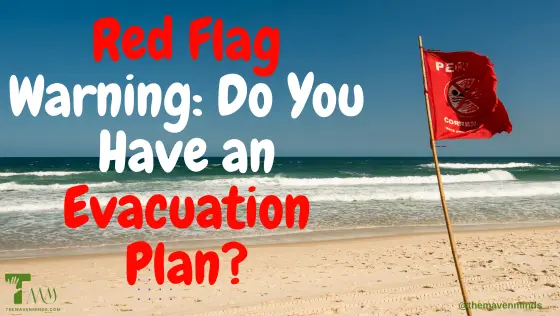Wildfires can be devastating, causing damage to homes, property, and human lives. In recent years, wildfires have become increasingly common, and one of the reasons for this is the phenomenon of Red Flag Warning. A Red Flag Warning is a warning issued by the National Weather Service that indicates the risk of wildfire is high. In this article, we will discuss what a Red Flag Warning is, the criteria for issuing it, the impact of Red Flag Warning, and what to do when you receive one.
What is a Red Flag Warning?
A Red Flag Warning is a term used to describe weather conditions that could lead to an increased risk of wildfire. The National Weather Service issues this warning to alert people to the fact that the combination of high winds, low humidity, and warm temperatures can create ideal conditions for a wildfire to start and spread quickly.
Criteria for Issuing a Red Flag Warning
Several criteria must be met for the National Weather Service to issue a Red Flag Warning. These criteria include:
- Low relative humidity (less than 25%)
- Strong winds (15 mph or greater)
- Dry vegetation and/or drought conditions
- High temperatures (usually above 75°F)
If these conditions are met, the National Weather Service will issue a Red Flag Warning for the affected area.
Red Flag Warning and Fire Danger
A Red Flag Warning is a clear indicator that the risk of a wildfire is high. In these conditions, a small spark can quickly ignite and spread into a large fire, particularly in areas where there is dry vegetation. Therefore, it is important to be aware of Red Flag Warnings and take appropriate precautions to reduce the risk of a fire.
Impacts of Red Flag Warning
A Red Flag Warning can have significant impacts on communities and the environment. When a Red Flag Warning is issued, people must take extra precautions to reduce the risk of starting a wildfire. This may include avoiding outdoor activities that involve flames or sparks, such as barbecues or fireworks. It can also mean that businesses, schools, and public areas may need to close temporarily to avoid accidents.
Red Flag Warning: Do You Have an Evacuation Plan?
Don’t wait until it’s too late – create an evacuation plan now so you’re prepared if a red flag warning is issued in your area.
It is important to be prepared for a Red Flag Warning, particularly if you live in an area with a high risk of wildfires. Preparing for a Red Flag Warning includes:
- Creating a defensible space around your property by removing dry vegetation
- Ensuring that all outdoor equipment, such as grills and lawn mowers, are kept in good condition and free of flammable debris
- Having an emergency plan in place that includes evacuation routes and a designated meeting place
- Staying informed about Red Flag Warnings in your area by signing up for local alerts
Staying Safe During a Red Flag Warning
During a Red Flag Warning, it is essential to take steps to stay safe. These include:
- Avoiding outdoor activities that involve flames or sparks
- Being careful when using equipment that could create a spark or flame, such as grills or lawn mowers
- Having an emergency kit that includes items such as water, non-perishable food, and first aid supplies
- Following evacuation orders if they are issued
Conclusion
In conclusion, a Red Flag Warning is a warning issued by the National Weather Service that indicates the risk of wildfire is high. It is important to be aware of Red Flag Warnings and take appropriate precautions to reduce the risk of starting a wildfire. This includes preparing your property, having an emergency plan in place, staying informed, and staying safe during a Red Flag Warning.
FAQs
How long does a Red Flag Warning last?
A Red Flag Warning typically lasts between 12 and 24 hours, but it can be extended if weather conditions persist.
How often are Red Flag Warnings issued?
The National Weather Service releases Red Flag Warnings when specific weather conditions satisfy particular standards. The frequency of these warnings depends on the weather conditions in a given area.
Can you have a Red Flag Warning without high winds?
High winds are one of the criteria for a Red Flag Warning, but it is possible to have a warning issued without strong winds if other criteria are met, such as low humidity and high temperatures.
How can I prepare for a Red Flag Warning?
Preparing for a Red Flag Warning includes creating a defensible space around your property, having an emergency plan in place, staying informed, and staying safe during a Red Flag Warning.
What should I do if I receive a Red Flag Warning?
If you receive a Red Flag Warning, take steps to reduce the risk of starting a wildfire, such as avoiding outdoor activities that involve flames or sparks, being careful when using equipment that could create a spark or flame, and following evacuation orders if they are issued.

